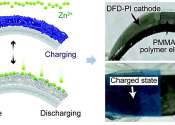Solar cell material can assist self-driving cars in the dark
Material used in organic solar cells can also be used as light sensors in electronics. This has been shown by researchers at Linköping University, Sweden, who have developed a type of sensor able to detect circularly polarized ...
Sep 28, 2023
0
15









